Юваль Ной Харари - Sapiens. Краткая история человечества
- Название:Sapiens. Краткая история человечества
- Автор:
- Жанр:
- Издательство:Синдбад
- Год:2011
- Город:Москва
- ISBN:978-5-905891-64-9
- Рейтинг:
- Избранное:Добавить в избранное
-
Отзывы:
-
Ваша оценка:
Юваль Ной Харари - Sapiens. Краткая история человечества краткое содержание
Сто тысяч лет назад Homo sapiens был одним из как минимум шести видов человека, живших на этой планете, — ничем не примечательным животным, которое играло в экосистеме роль не большую, чем гориллы, светлячки или медузы. Но около семидесяти тысяч лет назад загадочное изменение когнитивных способностей Homo sapiens превратило его в хозяина планеты и кошмар экосистемы. Как человек разумный сумел покорить мир? Что стало с другими видами человека? Когда и почему появились деньги, государства и религия? Как возникали и рушились империи? Почему почти все общества ставили женщин ниже мужчин? Как наука и капитализм стали господствующими вероучениями современной эры? Становились ли люди с течением времени счастливее? Какое будущее нас ожидает? Юваль Харари показывает, как ход истории формировал человеческое общество и действительность вокруг него. Его книга прослеживает связь между событиями прошлого и проблемами современности и заставляет читателя пересмотреть все устоявшиеся представления об окружающем мире.
Sapiens. Краткая история человечества - читать онлайн бесплатно ознакомительный отрывок
Интервал:
Закладка:
72
Ferguson, Ascent of Money, 185-198.
73
Jennie B. Dormah et al., ‘The age-1 and daf-2 Genes Function in a Common Pathway to Control the Lifespan of Caenorhabditis elegans ’, Genetics 141:4 (1995), 1399-1406; Koen Houthoofd et al., ‘Life Extension via Dietary Restriction is Independent of the Ins/IGF-1 Signaling Pathway in Caenorhabditis elegans ’, Experimental Gerontology 38:9 (2003), 947-954.
74
Maddison, The World Economy , vol. 1,31; Wrigley, English Population History, 295; Christian, Maps of Time, 450, 452; ‘World Health Statistic Report 2009’, 35-45, World Health Organization, accessed December 10, 2010 http://www.who.int/whosis/whostat/EN_WHS09_Full.pdf.
75
Wrigley, English Population History , 296.
76
Там же.
77
Michael Prestwich, Edward I (Berkley: University of California Press, 1988), 125-126.
78
Stephen R. Bown, Scurvy: How a Surgeon, a Mariner, and a Gentleman Solved the Greatest Medical Mystery of the Age of Sail (New York: Thomas Dunne Books, St. Matins Press, 2004); Kenneth John Carpenter, The History of Scurvy and Vitamin C (Cambridge: Cambridge University Press, 1986).
79
James Cook, The Explorations of Captain James Cook in the Pacific, as Told by Selections of his Own Journals 1768-1779 , ed. Archibald Grenfell Price (New York: Dover Publications, 1971), 16-17; Gananath Obeyesekere, The Apotheosis of Captain Cook: European Mythmaking in the Pacific (Princeton: Princeton University Press, 1992), 5; J.C. Beaglehole, ed., The Journals of Captain James Cook on His Voyages of Discovery, vol. 1 (Cambridge: Cambridge University Press, 1968), 588.
80
Mark, Origins of the Modern World , 81.
81
Christian, Maps of Time, 436.
82
John Darwin, After Tamerlane: The Global History of Empire since 1405 (London: Allen Lane, 2007), 239.
83
Soli Shahvar, ‘Railroads i. The First Railroad Built and Operated in Persia^ in the Online Edition of Encyclopaedia Iranica , last modified April 7, 2008, http://www.iranicaonline.org/articles/railroads-i; Charles Issawi, ‘The Iranian Economy 1925-1975: Fifty Years of Economic Development’, in Iran under the Pahlavis, ed. George Lenczowski (Stanford: Hoover Institution Press, 1978), 156.
84
Mark, The Origins of the Modern World , 46.
85
Kirkpatrik Sale, Christopher Columbus and the Conquest of Paradise (London: Tauris Parke Paperbacks, 2006), 7-13.
86
Edward M. Spiers, The Army and Society: 1815-1914 (London: Longman, 1980), 121; Robin Moore, ‘Imperial India, 1858-1914’, in The Oxford History of the British Empire: The Nineteenth Century ; vol. 3, ed. Andrew Porter (New York: Oxford University Press, 1999), 442.
87
Vinita Damodaran, ‘Famine in Bengal: A Comparison of the 1770 Famrtne in Bengal and the 1897 Famine in Chotanagpur’, The Medieval History Journal 10: 1-2 (2007), 151.
88
Maddison, World Economy , vol. 1, 261, 264; ‘Gross National Income Per Capita 2009, Atlas Method and PPP’, The World Bank, accessed December 10, 2010, http://siteresources.worldbank.org/DATASTATISTICS/Resources/GNIPC.pdf.
89
Этот пример с пекарней не слишком точен по расчетам. Поскольку банк вправе одалживать $10 на каждый имеющийся у него $1, банки могут выдавать предпринимателям по $909 тысяч из миллиона, резервируя $91 тысячу. Но, чтобы облегчить жизнь читателям, я предпочел круглые числа. Тем более банки не так уж и строго придерживаются этих правил.
90
Carl Trocki, Opium , Empire and the Global Political Economy (New York: Routledge, 1999), 91.
91
Georges Nzongola-Ntalaja, The Congo from Leopold to Kabila: A Peoples History (London: Zed Books, 2002), 22.
92
Mark, Origins of the Modern World , 109.
93
Nathan S. Lewis and Daniel G. Nocera, ‘Powering the Planet: Chemical Challenges in Solar Energy Utilization, Proceedings of the National Academy of Sciences 103:43 (2006), 15731.
94
Kazuhisa Miyamoto (ed.), ‘Renewable Biological Systems for Alternative Sustainable Energy Production, FAO Agricultural Services Bulletin 128 (Osaka: Osaka University, 1997), chapter 2.1.1, accessed December 10, 2010, http://www.fao.org/docrep/W7241E/w7241e06.ht m#2.1.1percent20solarpercent20energy; James Barber, ‘Biological Solar Energy’, Philosophical Transactions of the Royal Society A 365:1853 (2007), 1007
95
‘International Energy Outlook 2010’, U.S. Energy Information Administration, 9, accessed December 10,2010, http://www.eia.doe.gov/oiaf/ ieo/pdf/0484(2010).pdf.
96
S. Venetsky, ‘"Silver" from Clay’, Metallurgist 13:7 (1969), 451; Aftalion, Fred, A History of the International Chemical Industry (Philadelphia: University of Pennsylvania Press, 1991), 64; A. J. Downs, Chemistry of Aluminum , Gallium, Indium and Thallium (Glasgow: Blackie Academic & Professional, 1993), 15.
97
Jan Willem Erisman et al, ‘How a Century of Ammonia Synthesis Changed the World’ in Nature Geoscience 1 (2008), 637.
98
G. J. Benson and В. E. Rollin (eds.), The Well-Being of Farm Animals: Challenges and Solutions (Ames, LA: Blackwell, 2004); M .C. Appleby, J. A. Mench, and B. O. Hughes, Poultry Behaviour and Welfare (Wallingford: CABI Publishing, 2004); J. Webster, Animal Welfare: Limping Towards Eden (Oxford: Blackwell Publishing, 2005); C. Druce and P. Lymbery, Outlawed in Europe: How America Is Falling Behind Europe in Farm Animal Welfare (New York: Archimedean Press, 2002).
99
Harry Harlow and Robert Zimmermann, ‘Affectional Responses in the Infant Monkey’, Science 130: 3373 (1959), 421-432; Harry Harlow, ‘The Nature of Love’, American Psychologist 13 (1958), 673-685; Laurens D. Young et al., ‘Early stress and later response to seprate in rhesus monkeys’, American Journal of Psychiatry 130:4 (1973), 400-405; K. D. Broad, J. P. Curley and E. B. Keverne, ‘Mother-infant bonding and the evolution of mammalian social relationships’, Philosophical Transactions of the Royal Soceity В 361:1476 (2006), 2199-2214; Florent Pittet et al., ‘Effects of maternal experience on fearfulness and maternal behaviour in a precocial bird’, Animal Behavior (March 2013), In Press-available online at: http://www.sciehcedirect.com/ science/article/pii/S0003347213000547.
100
"National Institute of Food and Agriculture", United States Department of Agriculture, accessed December 10,2010, http://www.csrees.usda. gov/qlinks/extension.html.
101
Vaclav Smil, The Earths Biosphere: Evolution Dynamics , and Change (Cambridge, Mass.: MIT Press, 2002); Sarah Catherine Walpole et al., ‘The Weight of Nations: An Estimation of Adult Human Biomass’, BMC Public Health 12:439 (2012), http://www.biomedcentral. com/1471-2458/12/439.
102
William T. Jackman, The Development of Transportation in Modern England (London: Frank Cass & со., 1966), 324-327; H. J. Dyos and D.H. Aldcroft, British Transport — An economic survey from the seventeenth century to the twentieth (Leicester: Leicester University Press, 1969), 124-131; Wolfgang Schivelbusch, The Railway Journey: The Industrialization of Time and Space in the 19th Century (Berkeley: Univeristy of California Press, 1986).
103
Подробное обсуждение беспрецедентного мира последних десятилетий см. в особенности Steven Pinker, The Better Angels of Our Nature: Why Violence Has Declined (New York: Viking, 2011); Joshua S. Goldstein, Winning the War on War: The Decline of Armed Conflict Worldwide (New York, N.Y.: Dutton, 2011); Gat, War in Human Civilization.
104
‘World Report on Violence and Health: Summary, Geneva 2002’, World Health Organization, accessed December 10,2010, http://www.who. int/whr/2001/en/whr0 l_annex_en.pdf. Уровень смертности в прежние эпохи см. Lawrence Н. Keeley, War before Civilization: The Myth of the Peaceful Savage (New York: Oxford University Press, 1996).
105
‘World Health Report, 2004’, World Health Organization, 124, accessed 10 December, 2010, http://www. who.int/whr/2004/en/report04_en.pdf.
106
Raymond C. Kelly, Warless Societies and the Origin of War (Ann Arbjjr: University of Michigan Press, 2000), 21. See also Gat, War in Human Civilization , 129-131; Keeley, War before Civilization.
107
Manuel Eisner, ‘Modernization, Self-Control and Lethal Violence’, British Journal of Criminology 41:4 (2001), 618-638; Manuel Eisner, ‘Long- Term Historical Trends in Violent Crime’, Crime and Justice: A Review of Research 30 (2003), 83-142; ‘World Report on Violence and Health: Summary, Geneva 2002’, World Health Organization, accessed December 10, 2010, http://www.who.int/whr/2001/en/whr01_annex_en.pdf; ‘World Health Report, 2004’, World Health Organization, 124, accessed 10 December, 2010, http://www. who.int/whr/2004/en/report04_en.pdf.
108
Napoleon Chagnon, Yanomamo: The Fierce People (New York: Holt, Rinehart and Winston, 1968); Keeley, War before Civilization.
109
О психологии и биохимии счастья полезно почитать: Jonathan Haidt, The Happiness Hypothesis: Finding Modern Truth in Ancient Wisdom (New York: Basic Books, 2006); R. Wright, The Moral Animal: Evolutionary Psychology and Everyday Life (New York: Vintage Books, 1994); M. Csikszentmihalyi, ‘If We Are So Rich, Why Aren’t We Happy?’, American Psychologist 54:10 (1999): 821-827; F. A. Huppert, N. Baylis and B. Keverne, ed., The Science of Well-Being (Oxford: Oxford University Press, 2005); Michael Argyle, The Psychology of Happiness, 2nd edition (New York: Routledge, 2001); Ed Diener (ed .), Assessing Well-Being: The Collected Works of Ed Diener (New York: Springer, 2009); Michael Eid and Randy J. Larsen (eds.)> The Science of Subjective Well-Being (New York: Guilford Press, 2008); Richard A. Easterlin (ed.), Happiness in Economics (Cheltenham: Edward Elgar Pub., 2002); Richard Layard, Happiness: Lessons from a New Science (New York: Penguin, 2005).
Читать дальшеИнтервал:
Закладка:
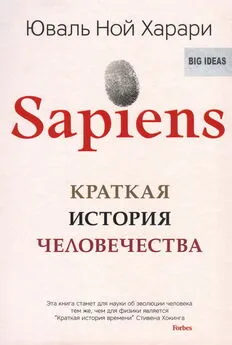


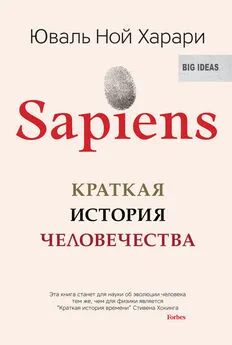
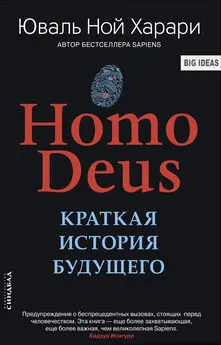
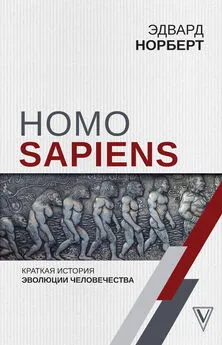
![Юваль Ной Харари - 21 урок для XXI века [Версия с комментированными отличиями перевода]](/books/1080711/yuval-noj-harari-21-urok-dlya-xxi-veka-versiya-s-ko.webp)
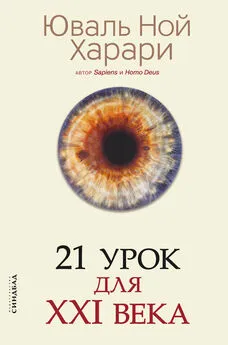

![Юваль Ной Харари - Sapiens. Краткая история человечества [litres]](/books/1102059/yuval-noj-harari-sapiens-kratkaya-istoriya-cheloveche.webp)
